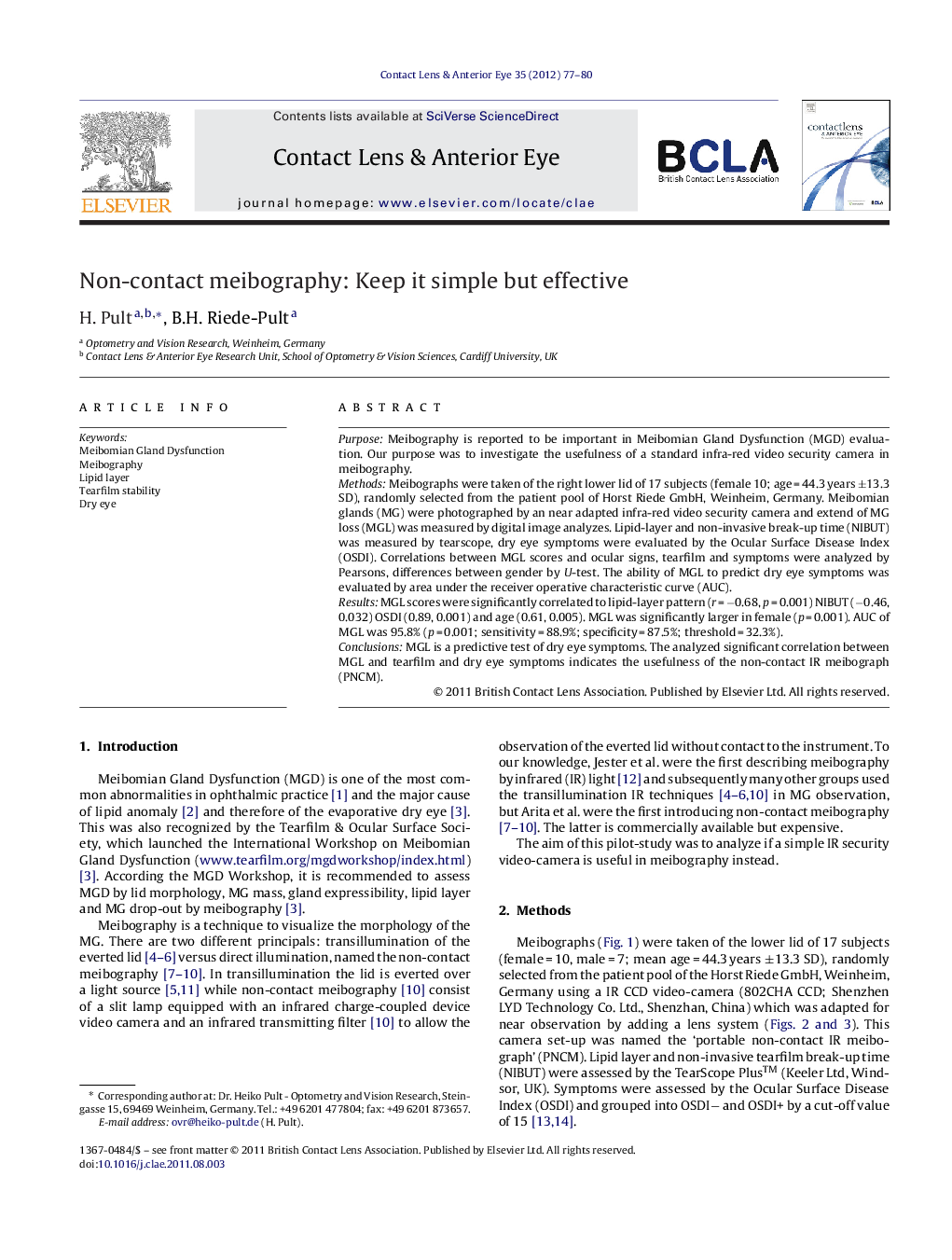| Article ID | Journal | Published Year | Pages | File Type |
|---|---|---|---|---|
| 2699312 | Contact Lens and Anterior Eye | 2012 | 4 Pages |
PurposeMeibography is reported to be important in Meibomian Gland Dysfunction (MGD) evaluation. Our purpose was to investigate the usefulness of a standard infra-red video security camera in meibography.MethodsMeibographs were taken of the right lower lid of 17 subjects (female 10; age = 44.3 years ±13.3 SD), randomly selected from the patient pool of Horst Riede GmbH, Weinheim, Germany. Meibomian glands (MG) were photographed by an near adapted infra-red video security camera and extend of MG loss (MGL) was measured by digital image analyzes. Lipid-layer and non-invasive break-up time (NIBUT) was measured by tearscope, dry eye symptoms were evaluated by the Ocular Surface Disease Index (OSDI). Correlations between MGL scores and ocular signs, tearfilm and symptoms were analyzed by Pearsons, differences between gender by U-test. The ability of MGL to predict dry eye symptoms was evaluated by area under the receiver operative characteristic curve (AUC).ResultsMGL scores were significantly correlated to lipid-layer pattern (r = −0.68, p = 0.001) NIBUT (−0.46, 0.032) OSDI (0.89, 0.001) and age (0.61, 0.005). MGL was significantly larger in female (p = 0.001). AUC of MGL was 95.8% (p = 0.001; sensitivity = 88.9%; specificity = 87.5%; threshold = 32.3%).ConclusionsMGL is a predictive test of dry eye symptoms. The analyzed significant correlation between MGL and tearfilm and dry eye symptoms indicates the usefulness of the non-contact IR meibograph (PNCM).
